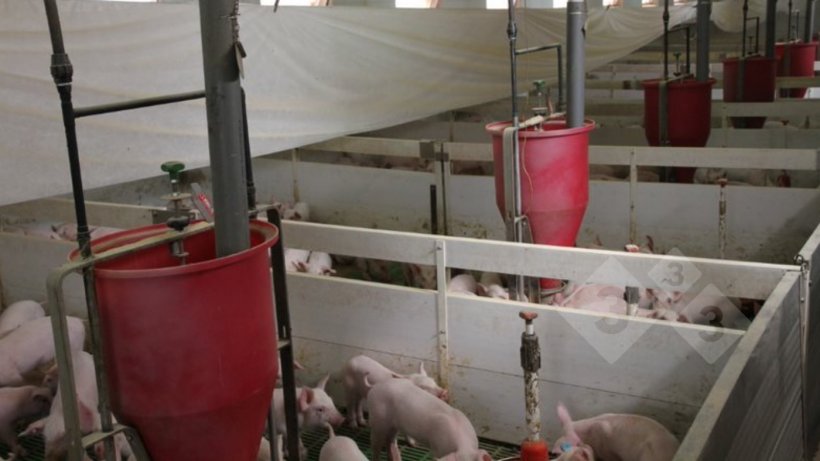The value of an ingredient we use for producing pork needs to be assessed in relation to the cost to produce a kilogram of lean meat. Least cost formulation software has been an excellent tool which allows us to compare the nutritional value and to some extent the economic value of different feed ingredients. However, the software is unable to evaluate the functional value of raw materials or additives, nor can it evaluate the specific economic implications for a given situation (heat stress, disease outbreak, pork price, etc). The nutritionist must therefore be able to appreciate the functional benefits and consider their value within the production system where they will be applied.
Functional value is fixed

As our industry moves away from the use of antibiotic growth promoters and heavy metals (e.g. copper and zinc) the functional value of nutritional ingredients has become increasingly more important to understand. Research continues to highlight how important the interaction between the pig, the gut microbiome and the immune system is. In our search to create gut friendly diets we see new nutrients being added to the specifications like; glutamine, omega 3, undigested protein, soluble, insoluble and inert fibre to name a few.
However, not all functional values can be represented by nutrients within a formulation. One very good example of this is spray dried plasma protein (SDPP). Whilst SDPP is a highly digestible and palatable raw material, its main economic value is associated with its ability to provide passive immunity to immunologically immature pigs. Pujols (et al 2016) also demonstrated that providing SDPP to piglets for 14 days post weaning was able to improve the survivability and performance of pigs through to slaughter. It is therefore important to evaluate the scale of the benefit a raw material or feed additive can have. This type of evaluation is also important when we assessing feed additives which are used in sow diets but may well have significant beneficial effects in the progeny or in the reproductive output over her lifetime. An example of this may be an eubiotic which is able to improve colostrum quality, which in turn should improve survivability and litter weaning weights. This technology would be more valuable in hyper-prolific sows where small birth weight piglets, and higher pre-weaning mortality are an issue. The value of an additive is not fixed and must be assessed in relation to the situation in which it will be applied.
How to assess economic value?
The most efficient diets are not always the most economic diets. We are lucky to be feeding opportunistic omnivores which are able to utilise a broad range of feed ingredients. Table 1 illustrates the relationship between average feed price and feed cost/kg of pork produced. The example for a pig from 8 to 100kg liveweight, assumes the fixed costs (e.g. labour, housing, utilises, etc) and nutrient specification were equivalent and the survivability was unaffected. It is assumed that cheaper by-products were used to reduce diet costs, and a small compromise on carcass yield occurred due to the increased fibre levels. This example highlights when it is more important to focus on the feed cost/kg pork produced rather than on feed efficiency (FCR).
Table 1. Influence of feed cost on the feed cost to produce a kg of pork meat.
| Average feed cost USD$/mT | $300 | $290 | $280 | $270 |
|---|---|---|---|---|
| FCR | 2.180 | 2.251 | 2.324 | 2.399 |
| Feed Cost USD$/pig | 60.168 | 60.05 | 59.87 | 59.6 |
| Carcass yield, % | 82 | 81.8 | 81.5 | 81.2 |
| Feed Cost USD$/kg pork | 0.798 | 0.798 | 0.798 | 0.798 |
Other considerations
On the other hand, we also must consider the draw backs to a given ingredient. Risk of mycotoxin contamination, oxidation or putrification, anti-nutritional factors, palatability, or potential antagonist interactions (e.g. between probiotics and antibiotics, or zinc oxide and phytase) should also be considered when selecting ingredients. This may require the additional use and expense of additives (e.g. mycotoxin biners, flavours, antioxidants) to prevent negative consequences.
We also need to consider the processing technology to be applied. Thermal stability can be an issue for some ingredients like milk powders, probiotics, enzymes, and vitamins. Particle size can also influence the functional value of raw materials and is important to consider when trying to balance gut health and feed utilisation.
Summary
The cost of a raw material or feed additive is fixed, but the value proposition is not. It is important to assess the value of a feed ingredient not only on the nutritional and economic value but also on the functional value within the current situation. It is also good practice to routinely review the value proposition of feed additives. To ensure judicious use of feed ingredients, the true assessment must be related to the cost to produce a kilogram of pork, as this is the business we are in.




